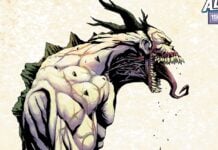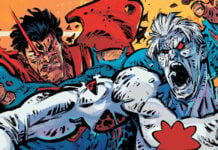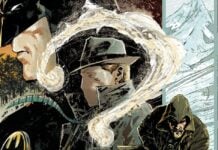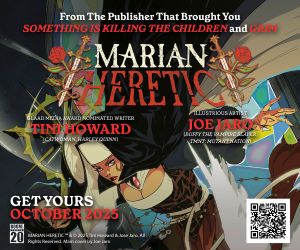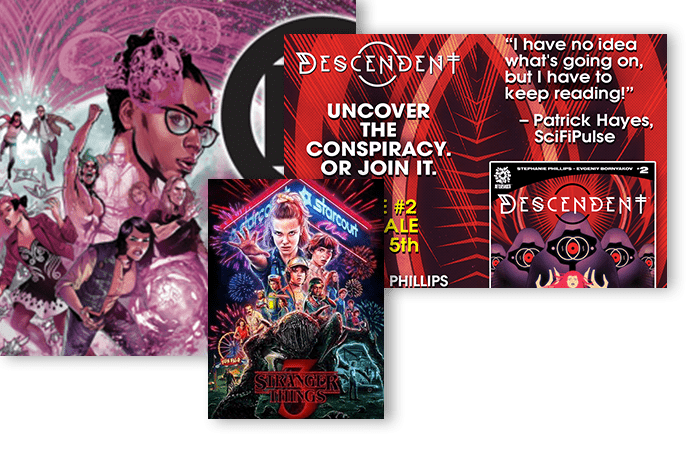THIS WEEK: Absolute Superman #7 and Absolute Green Lantern #2 are distinct and excellent. Plus, we check in with Poison Ivy!
Absolute Superman #7
Writer: Jason Aaron
Artist: Carmine Di Giandomenico
Letterer: Becca Carey
This week’s Absolute Superman #7 feels like a transition point for a book that is slowly becoming more grave and serious. This transition is primarily accomplished through the introduction of a creepy and gruesome take on Brainiac, as well as with risks that continue to grow.
Absolute Superman #7 very much feels like an origin story for this universe’s Braniac. Where the first arc gave us Kal-El’s origin, now we are getting the back story for one of his chief antagonists, and wow, what a gruesome opening to a comic. This Brainiac is terrifying, and his introduction is nothing short of chilling. Absolute Brainiac left me so jarred, jumping from the ending of the last issue with the introduction of this arc’s main antagonist being Ra’s al Ghul, to then seeing this version of Brainiac being not only his underling but absolutely unhinged. Writer Jason Aaron clearly wanted to sell the reader on that, and I can’t help but think he had a lot of fun coming up with the wicked things he could get Brainiac to do in this comic.
I can say one thing for sure: Absolute Superman #7 delivered that. Having a guard throw up their own bones and flaying another alive is something I will not forget anytime soon.
When it comes to Brainiac, the usual hallmarks are also here, including super-intellect and emotionless logic. But what sets this version apart is how disturbingly creepy he is. This Brainiac is a scarred, maimed figure who revels in grotesque body horror experiments and takes joy in inflicting pain. What’s more, the story doubles as a twisted commentary on what it means to be “human”—and more specifically, alive. We witness the disturbing transformation of Brainiac from a lowly janitor into a psychotic, obsessive scientist fixated on Superman.
Carmine Di Glandomenico’s art sells this vision. His depiction of Brainiac throughout this issue enhances Aaron’s vision. There’s Brainiac’s design being a half-robot, half-clone, maimed, emaciated creature. The book slowly makes him into a walking zombie, which only made it worse to see what Brianic used to look like before he went insane. Those differences are so important, being able to see the transition from a “normal” looking Brainiac to the monster he becomes makes everything that happens before this stand out. You can’t help but be immersed in his villain monologue because it becomes more chilling when you realize he is talking to himself.
Once again, Absolute Superman #7 feels like a pivot point for this series, not just in its tone but also in its purpose. Having already established Kal-El’s origins, this chapter is able to lean hard into the horror of Brainiac’s own twisted origins. It’s able to successfully reframe Brainiac as not just a cold, calculating adversary, but as a monstrous reflection of obsession and lost humanity. This creative team clearly wants to push the boundaries of what a Superman story can be, and here they do so with gusto. Aaron’s script, combined with Di Giandomenico’s unnerving visuals, is able to give readers a villain who’s both emotionally resonant and viscerally terrifying. This issue doesn’t just introduce a new antagonist—it redefines what kind of threat Superman is up against.
In the end, Absolute Superman #7 succeeds not only as a character study of Brainiac but as a bold tonal shift for the series. It challenges the traditional Superman narrative. It makes the world of Absolute Superman feel far more dangerous and unpredictable. If this issue is any indicator of what’s to come, readers have a lot to look forward too.
Final Verdict: BUY
The Round-Up
In just two issues, Absolute Green Lantern has gotten my attention through the phenomenal artwork by Jahnoy Lindsay. Redesigning characters for the Absolute Universe is one thing, but what truly stands out here are the expressive faces—each character reacts with the raw emotion you’d expect from someone encountering aliens for the first time. It’s intentionally over-the-top, and it works beautifully. Even more compelling are the visual references to angels, especially in Abin Sur’s redesign and the sense of “judgment” that hangs over his interactions with the protagonists. Writer Al Ewing reinforces these symbolic themes through each encounter with Abin Sur, making those moments the true highlight of the issue. The introduction of a mysterious “Green Level of Light” is an interesting one, raising questions about the other levels and how they relate to the broader emotional spectrum. I’m especially excited to see where the takes the concept of “Black Hand” Hal Jordan and how this new interpretation of willpower might reshape not just our Green Lanterns, but the world around them. We are still very early in this run, and so far I have more questions than answers — which is exciting.
G. Willow Wilson has been delivering a thought-provoking, emotionally-rich story throughout her Poison Ivy run, and issue #33 is no exception. This chapter explores themes of reconstruction and healing, as Pamela sets her sights on reviving an abandoned ghost town. If Undine goes through with the terraforming, no one will notice the change; but for Ivy, it’s not just about reclaiming land — it’s about making it feel alive again. It’s nature’s own rewilding process, but as the issue makes clear, rebirth doesn’t come without its consequences. As Ivy grapples with Janet’s condition, she undergoes a transformation of her own—one that ties her emotional state to the land she’s trying to restore. Wilson even leans into the idea that sometimes even horrors need a hug. The point is drilled home with artist Marcio Takara’s work, which embodies a version of events that feels alien but homely at the same time. I believe that’s what meshes well with Wilson’s writing, as they are able to blend story and visual changes into one cohesive narrative. This issue was a treat, and we’re not done yet either, as it sets up the upcoming conclusion of this arc—and what that might mean for Ivy and her friends.
Miss any of our earlier reviews? Check out our full archive!
And check out the Beat’s other recent comics reviews!
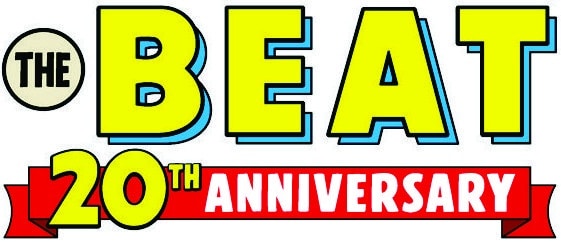
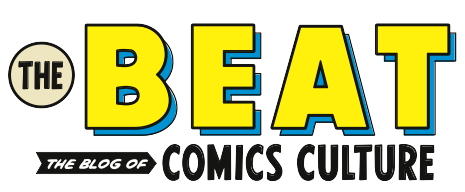
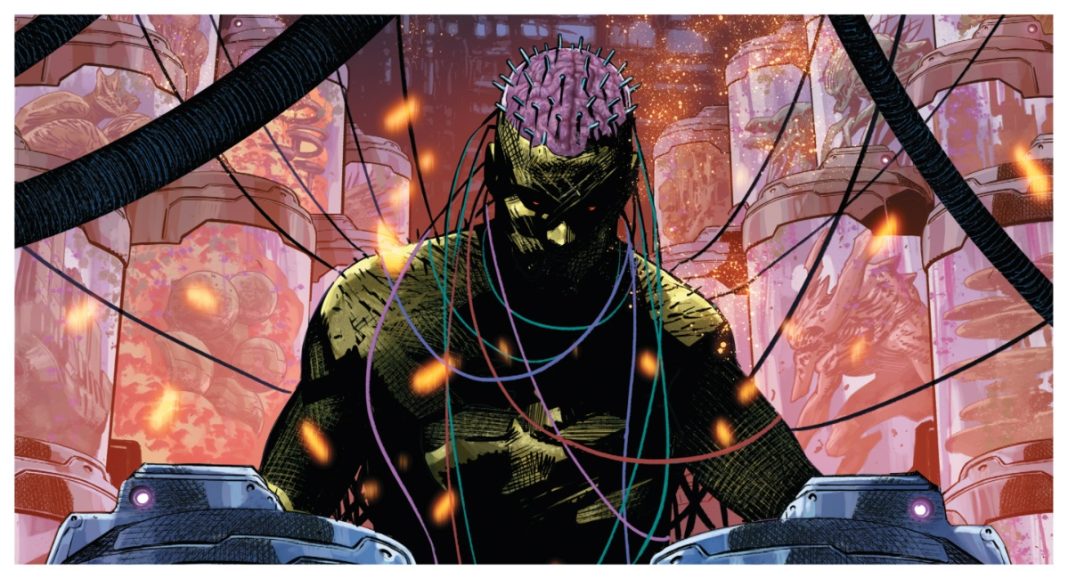
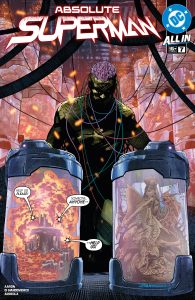
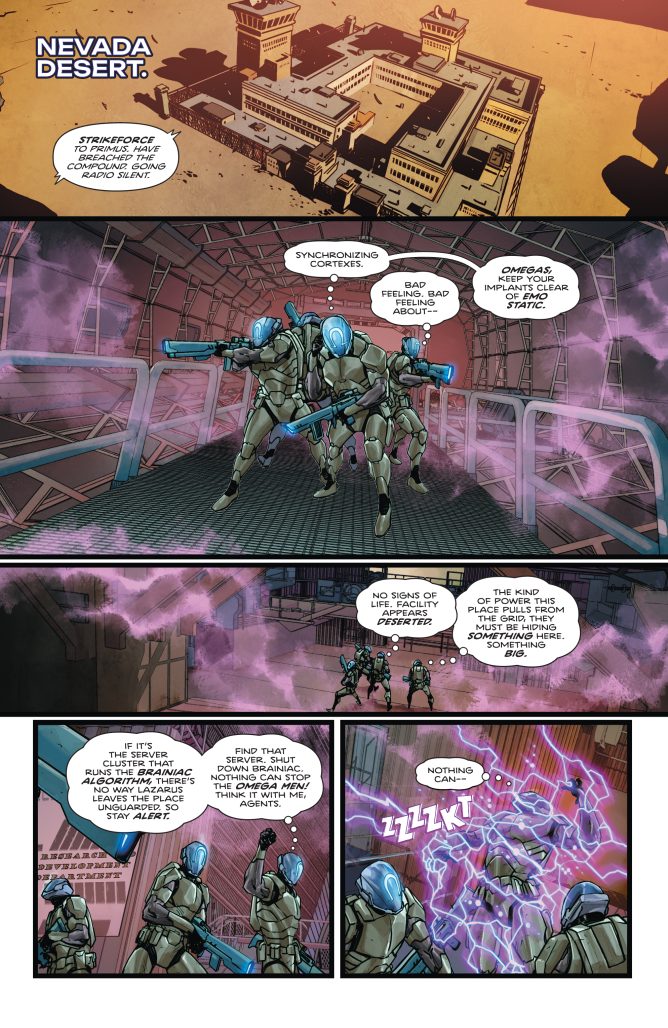
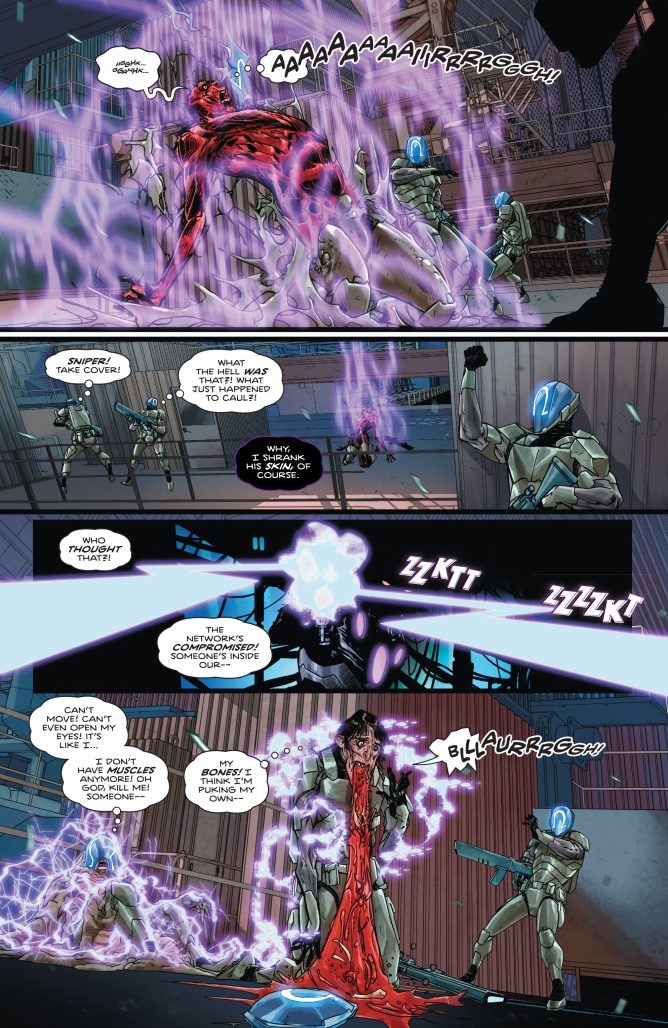
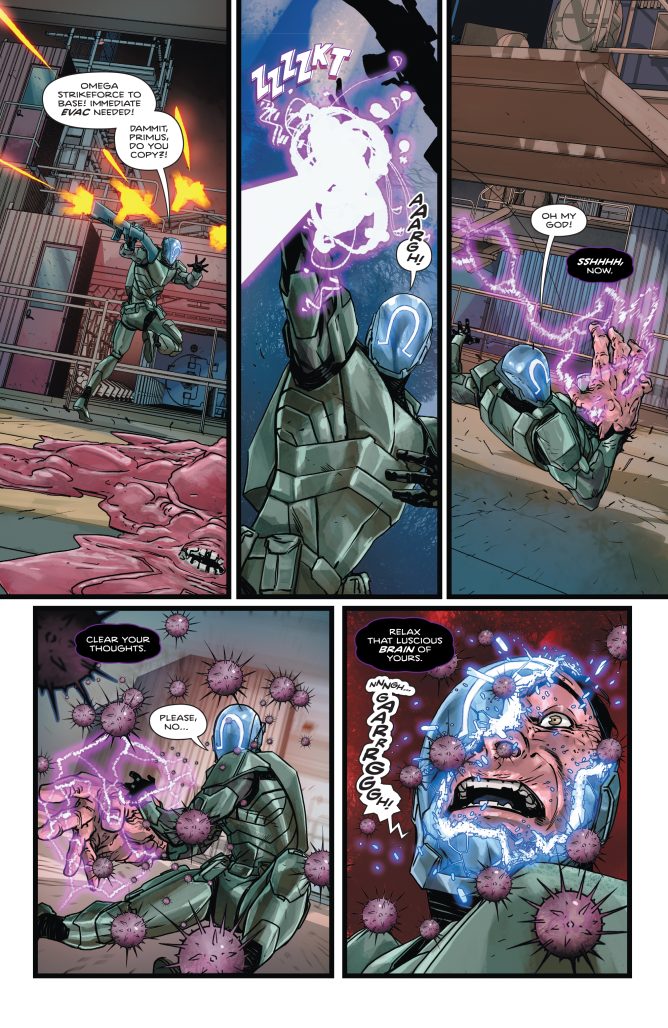
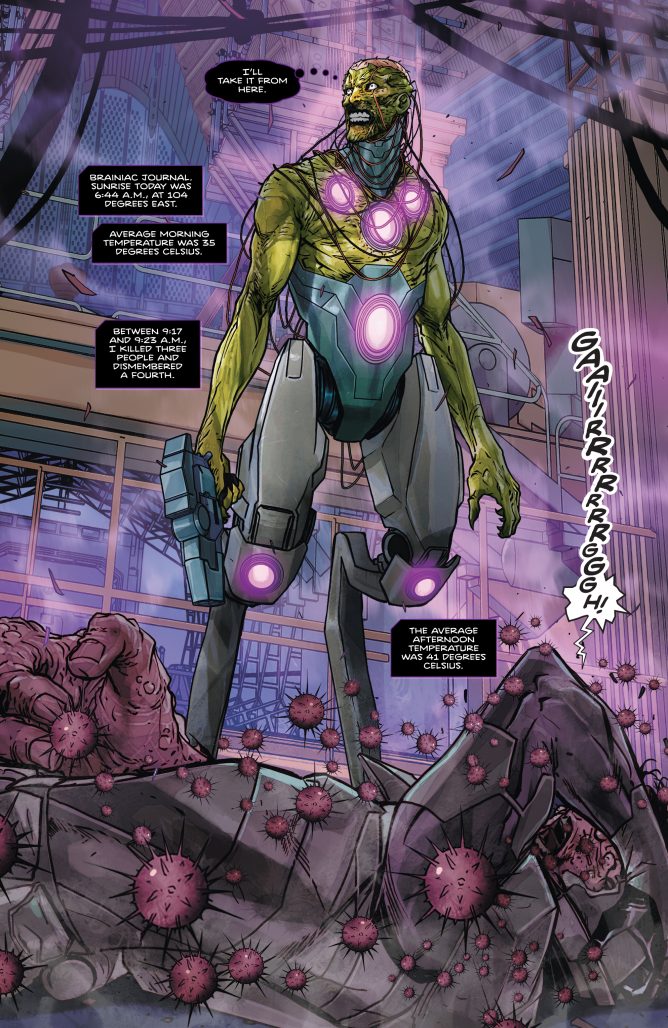
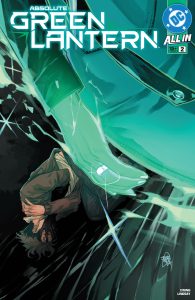 In just two issues, Absolute Green Lantern has gotten my attention through the phenomenal artwork by Jahnoy Lindsay. Redesigning characters for the Absolute Universe is one thing, but what truly stands out here are the expressive faces—each character reacts with the raw emotion you’d expect from someone encountering aliens for the first time. It’s intentionally over-the-top, and it works beautifully. Even more compelling are the visual references to angels, especially in Abin Sur’s redesign and the sense of “judgment” that hangs over his interactions with the protagonists. Writer Al Ewing reinforces these symbolic themes through each encounter with Abin Sur, making those moments the true highlight of the issue. The introduction of a mysterious “Green Level of Light” is an interesting one, raising questions about the other levels and how they relate to the broader emotional spectrum. I’m especially excited to see where the takes the concept of “Black Hand” Hal Jordan and how this new interpretation of willpower might reshape not just our Green Lanterns, but the world around them. We are still very early in this run, and so far I have more questions than answers — which is exciting.
In just two issues, Absolute Green Lantern has gotten my attention through the phenomenal artwork by Jahnoy Lindsay. Redesigning characters for the Absolute Universe is one thing, but what truly stands out here are the expressive faces—each character reacts with the raw emotion you’d expect from someone encountering aliens for the first time. It’s intentionally over-the-top, and it works beautifully. Even more compelling are the visual references to angels, especially in Abin Sur’s redesign and the sense of “judgment” that hangs over his interactions with the protagonists. Writer Al Ewing reinforces these symbolic themes through each encounter with Abin Sur, making those moments the true highlight of the issue. The introduction of a mysterious “Green Level of Light” is an interesting one, raising questions about the other levels and how they relate to the broader emotional spectrum. I’m especially excited to see where the takes the concept of “Black Hand” Hal Jordan and how this new interpretation of willpower might reshape not just our Green Lanterns, but the world around them. We are still very early in this run, and so far I have more questions than answers — which is exciting. 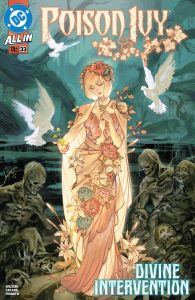 G. Willow Wilson has been delivering a thought-provoking, emotionally-rich story throughout her Poison Ivy run, and issue #33 is no exception. This chapter explores themes of reconstruction and healing, as Pamela sets her sights on reviving an abandoned ghost town. If Undine goes through with the terraforming, no one will notice the change; but for Ivy, it’s not just about reclaiming land — it’s about making it feel alive again. It’s nature’s own rewilding process, but as the issue makes clear, rebirth doesn’t come without its consequences. As Ivy grapples with Janet’s condition, she undergoes a transformation of her own—one that ties her emotional state to the land she’s trying to restore. Wilson even leans into the idea that sometimes even horrors need a hug. The point is drilled home with artist Marcio Takara’s work, which embodies a version of events that feels alien but homely at the same time. I believe that’s what meshes well with Wilson’s writing, as they are able to blend story and visual changes into one cohesive narrative. This issue was a treat, and we’re not done yet either, as it sets up the upcoming conclusion of this arc—and what that might mean for Ivy and her friends.
G. Willow Wilson has been delivering a thought-provoking, emotionally-rich story throughout her Poison Ivy run, and issue #33 is no exception. This chapter explores themes of reconstruction and healing, as Pamela sets her sights on reviving an abandoned ghost town. If Undine goes through with the terraforming, no one will notice the change; but for Ivy, it’s not just about reclaiming land — it’s about making it feel alive again. It’s nature’s own rewilding process, but as the issue makes clear, rebirth doesn’t come without its consequences. As Ivy grapples with Janet’s condition, she undergoes a transformation of her own—one that ties her emotional state to the land she’s trying to restore. Wilson even leans into the idea that sometimes even horrors need a hug. The point is drilled home with artist Marcio Takara’s work, which embodies a version of events that feels alien but homely at the same time. I believe that’s what meshes well with Wilson’s writing, as they are able to blend story and visual changes into one cohesive narrative. This issue was a treat, and we’re not done yet either, as it sets up the upcoming conclusion of this arc—and what that might mean for Ivy and her friends.